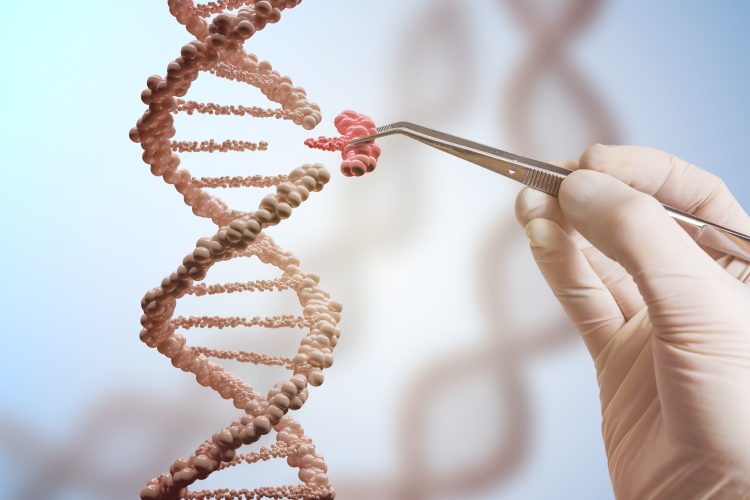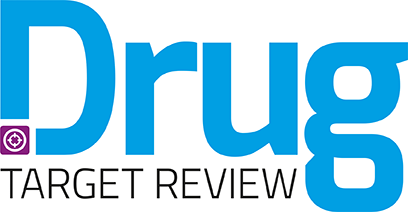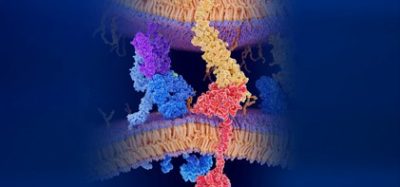Gene silencing: a step forward for rare disease therapy
Posted: 1 April 2025 | Dr Dan Williams (Co-founder and CEO of SynaptixBio) | No comments yet
Gene silencing offers a promising approach to treating rare neurological diseases like H-ABC. With clinical trials on the horizon, find out how targeted therapies could bring real hope to patients and families.


Advances in biotechnology are driving significant progress in the treatment of rare diseases, making it possible to develop targeted therapies for previously untreatable conditions.
Founded in 2021, SynaptixBio is working to develop therapies for TUBB4A leukodystrophies – a group of rare and severe neurological disorders. Co-founder and CEO Dr Dan Williams brings over 20 years of experience in biochemistry and drug development, with a strong background in research and clinical trials. His expertise has positioned SynaptixBio to advance its drug candidates toward clinical trials. In this interview, Williams shares the company’s plans for 2025, the challenges of treating rare diseases, and how gene-silencing technology could unlock new treatment options.
A career built on innovation
Dr Dan Williams’ career in the biotech industry is defined by strategic progress and scientific accomplishments. After earning a degree in biochemistry and physiology, followed by a PhD from the University of Dundee, Williams built a diverse career in research and drug development. “I have been in the industry for over 20 years,” Williams explains. “After university, I worked in various roles, becoming a senior scientist. I then took over management of a research group, initially running cell biology research and then preclinical development.”
His experience includes managing research groups, overseeing drug manufacturing, and leading clinical trials – key steps in translating laboratory research into real-world treatments. Williams later led research operations at Adaptimmune and served as Chief Product Officer at Meatable before co-founding SynaptixBio in 2021 with a clear goal: to develop therapies for rare neurological diseases, particularly TUBB4A leukodystrophies.
Vision for 2025: A major step towards clinical trials
Since its founding, SynaptixBio has made significant progress in advancing its research and development efforts. The company secured £2 million in seed funding and raised an additional £11 million in private investment in 2023. It also received two grants from Innovate UK, totalling £2.5 million, further strengthening confidence in its research and clinical development strategy.
Our vision for 2025 is to get into the clinic with our candidate drug for tackling H-ABC. If we can do that, it will be a major milestone for us and will start to give hope to patients and families.
A critical milestone for the company will be bringing its candidate drug for H-ABC (Hypomyelination with Atrophy of the Basal Ganglia and Cerebellum) to clinical trials by 2025. H-ABC is a rare and severe genetic disorder that affects the nervous system by causing a loss of myelin – the protective coating around nerve fibres. This disrupts communication between nerve cells, leading to difficulties with movement, speech, and coordination, as well as potential issues with vision and cognitive development.
“Our vision for 2025 is to get into the clinic with our candidate drug for tackling H-ABC,” Williams states. “If we can do that, it will be a major milestone for us and will start to give hope to patients and families.”
SynaptixBio holds two Rare Paediatric Drug Designations (RPDD) and two Orphan Drug Designations (ODDs) from the US Food and Drug Administration (FDA) – one for H-ABC and another for Isolated Hypomyelination, a milder form of TUBB4A leukodystrophy. This recognition highlights the potential impact of the company’s work in addressing rare neurological diseases.
Why rare disease biotech is gaining momentum
The rare disease biotech sector is seeing rapid growth and increased attention. While individual rare diseases are uncommon, they collectively affect between 350 and 400 million people worldwide. The market for antisense oligonucleotides (ASOs), a form of gene silencing, was valued at $4.4 billion in 2023 and is projected to grow at an 18 percent compound annual growth rate (CAGR), reaching $19.7 billion by 2032.
Several factors are driving this growth:
- Increased prevalence of neurodegenerative and genetic disorders.
- Advances in gene expression and delivery technologies.
- Regulatory incentives and approvals for antisense therapeutics.
- Growing demand for personalised medicine.
“Scientists now better understand how gene expression is regulated, leading directly to the development of ASOs that can target specific mutated genes,” Williams adds.
Building strong connections
A key element of SynaptixBio’s approach is its close relationship with the patient community. The company works closely with the H-ABC Foundation, which raises awareness about the disease and provides critical support to families affected by it.
“We are very proud to be closely associated with the H-ABC Foundation,” Williams says. “Beyond that, it maintains a map of patients’ locations, disease progression, symptoms and other data, which will be really useful when it comes time to start preparations for clinical trials.”
SynaptixBio holds regular meetings with the foundation to provide updates on research progress and listen to feedback from patients and their families. This partnership ensures that the company remains closely aligned with the needs of the patient community.
The challenges of living with H-ABC
H-ABC is the most severe form of TUBB4A leukodystrophy. It affects movement, speech, vision, and intellectual development, making everyday life challenging for patients and their families. “One of the biggest challenges for rare disease patients is getting to a diagnosis,” Williams points out. “Patients often present with symptoms that overlap with more common conditions, and it is a major challenge for primary care doctors to be aware of the 8,000 or so rare diseases that are currently known.”
One of the biggest challenges for rare disease patients is getting to a diagnosis.
This long and difficult diagnostic journey can take years, leaving families without access to proper care and support. The emotional and physical toll is significant, especially since 90 percent of rare diseases have no known cure. “Our mission is shaped simply by the need to help those patients,” Williams explains.
The science behind gene silencing
SynaptixBio’s innovative approach is based on gene silencing – a technique that stops the expression of a mutated gene without altering the gene itself. This is achieved using antisense oligonucleotides (ASOs), short strands of synthetic nucleotides that bind to the mutated RNA and prevent the formation of toxic proteins.
“H-ABC is, like most rare diseases, caused by a mutation in a single gene – in this case, TUBB4A,” Williams explains. “We are developing an ASO that targets TUBB4A and will, ultimately, prevent the mutation from forming a toxic protein. Gene silencing has been shown to have fewer side effects than gene editing.”
ASOs are already under trial at University College London Hospital for Alzheimer’s, targeting the production of the Tau protein. Similar approaches are being explored for treating Parkinson’s and Motor Neuron Disease.
A bold future for rare disease treatments
SynaptixBio is dedicated to developing effective treatments for rare diseases. Its work on H-ABC and related leukodystrophies, supported by the promise of gene-silencing technology, could lead to significant improvements for patients and their families. With clinical trials approaching and a solid foundation in scientific expertise and patient engagement, SynaptixBio is well-positioned to drive the next wave of advancements in rare disease treatment.
Meet Dr Dan Williams


Dr Dan Williams is CEO of SynaptixBio. He has spent over 20 years in the industry after studying at the University of Dundee for a degree in biochemistry and physiology, and a PhD. After his PhD he entered the industry, where he worked his way up to senior scientist. Dan then took over management of a cell research group, initially running a cell biology research project then preclinical development.
Following this he moved to drug development, focusing on the organisation and management of both manufacturing and clinical trials. After that particular therapy went into the clinic and was progressing within clinical trials, he moved to Adaptimmune and switched from biologics to developing cell therapies. He set up the development groups within Adaptimmune, while project managing some of the preclinical research and the move from the partnership with an academic group for their clinical trials, to taking on those clinical trials as a company.
He then managed the larger research group and moved from that position to the VP of Research Operations. From there, Dan moved to Meatable as the Chief Product Officer. Dan co-founded SynaptixBio Ltd. in 2021 with the aim to push leukodystrophy therapies through to clinical trials.
Related topics
Analysis, Assays, Clinical Trials, Gene Therapy, Genetic Analysis, Orphan drugs, RNAs
Related conditions
Alzheimer’s disease, Motor Neuron Disease, TUBB4A leukodystrophies
Related organisations
SynaptixBio
Related people
Dr Dan Williams (Co-founder and CEO of SynaptixBio)








